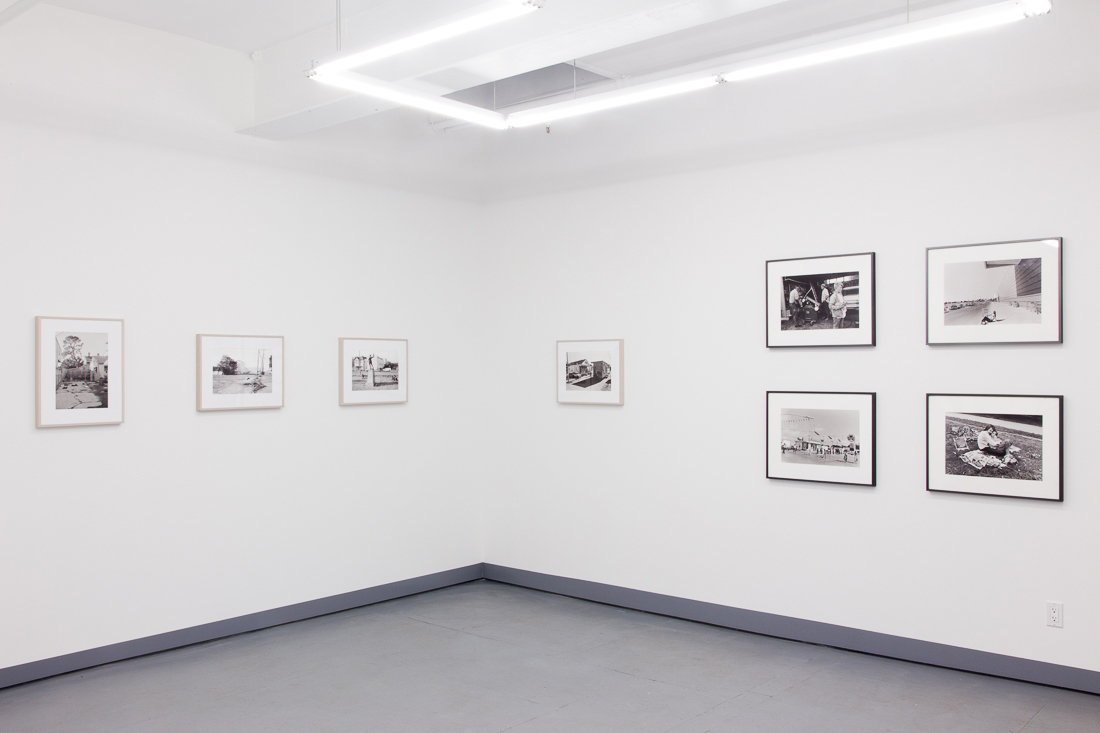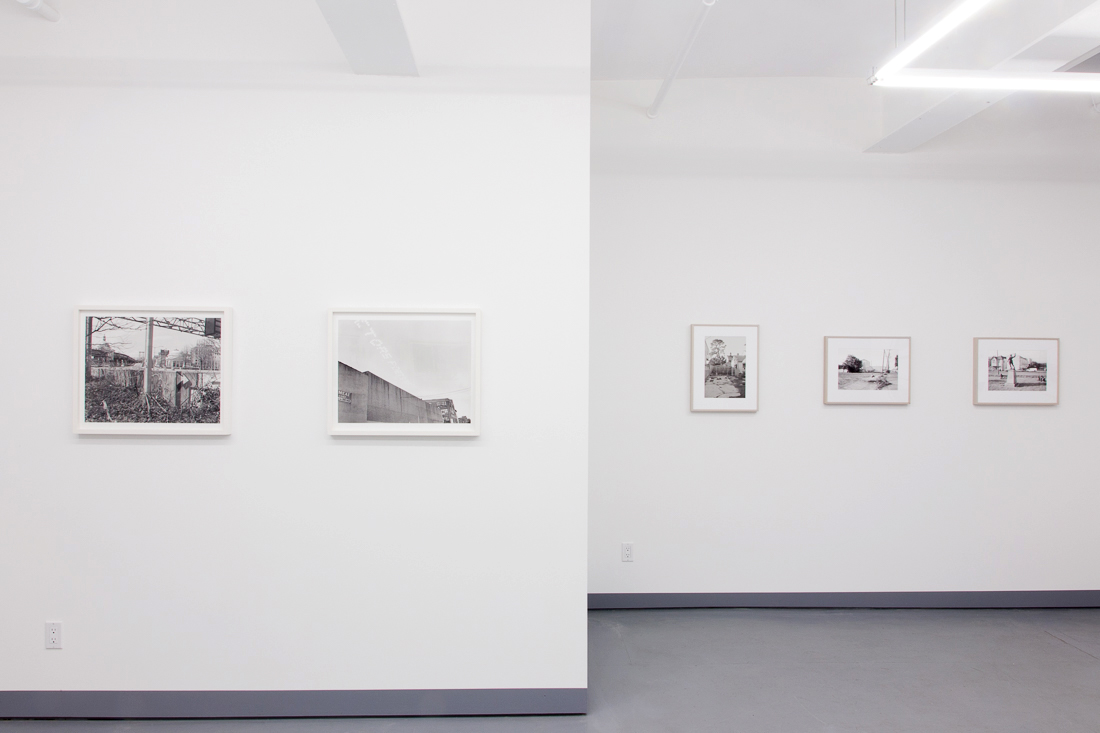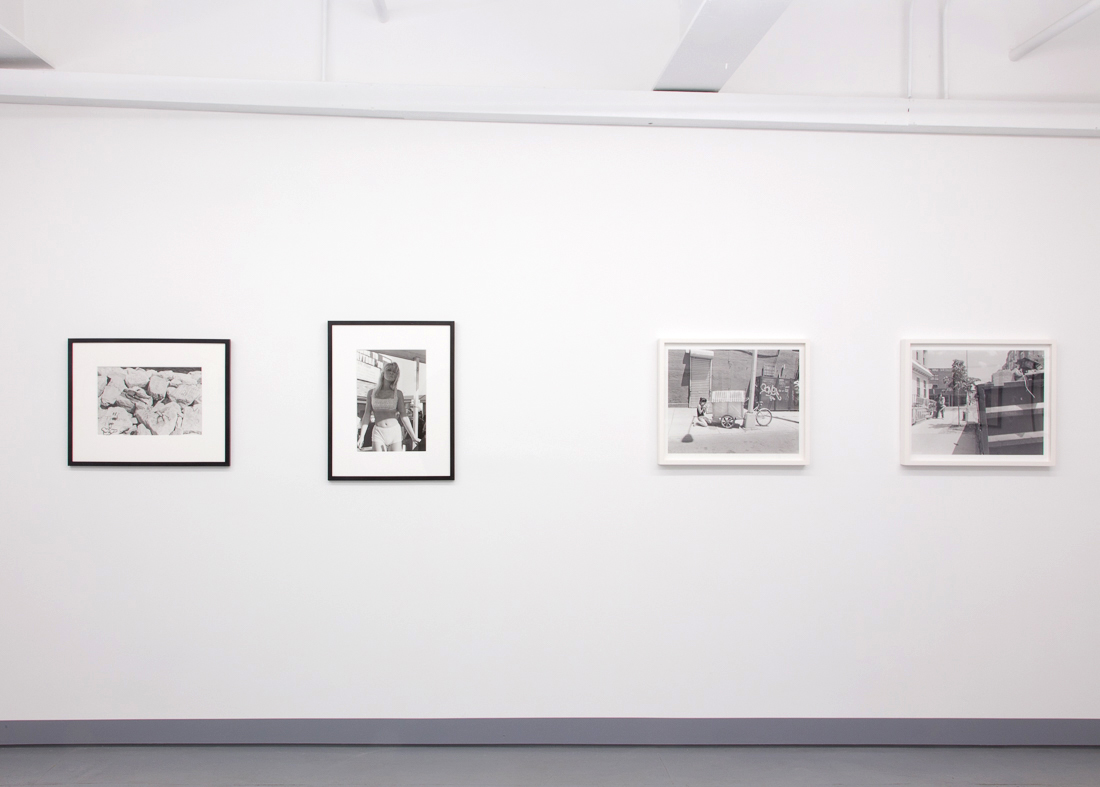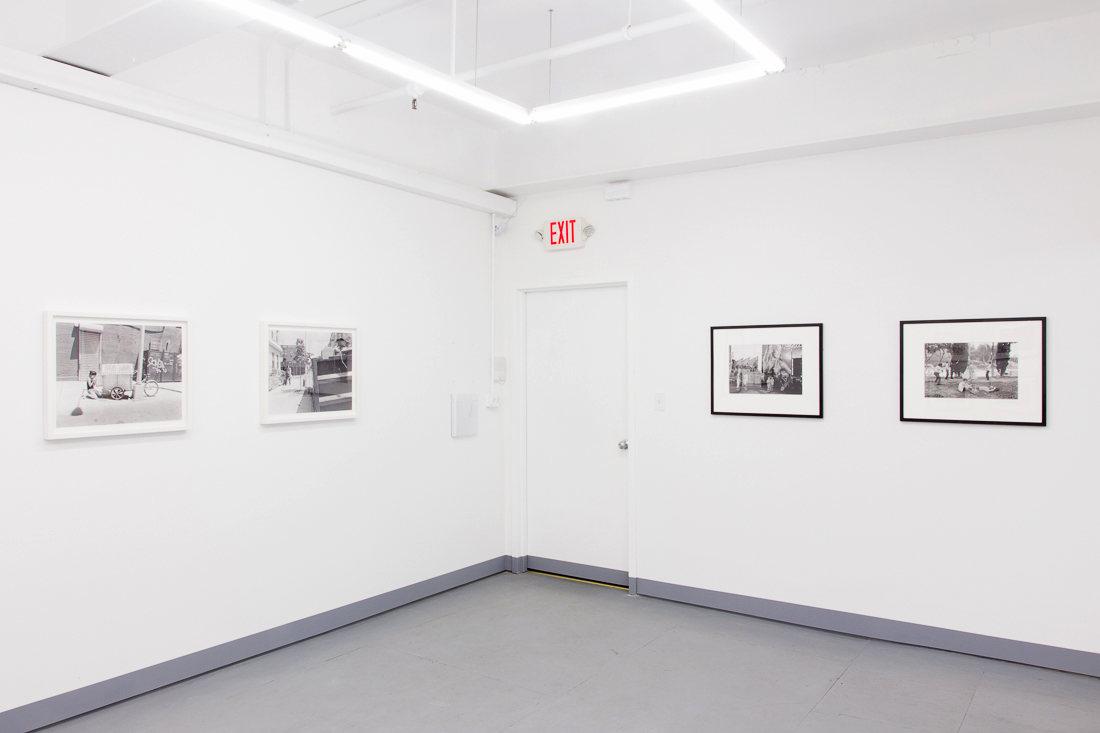An Introduction
STEPHEN HILGER • JOSEPH LAWTON • PAUL MCDONOUGH • SERGIO PURTELL
OCTOBER 28 – DECEMBER 4, 2016
OPENING RECEPTION FRIDAY, OCTOBER 28, 6–9 PM
STEPHEN HILGER in conversation with THOMAS ROMA at Transmitter FRIDAY, NOVEMBER 18, 7 PM
At the time of its invention, photography was a revolutionary technology, and critical discussion of the medium to this day seems doomed to be tied to technology’s development. Currently, discussions of photography are likely to center on the proliferation of camera phones, the popularity of Instagram, and the surplus of images online and in the physical world. Yet this tends to distract from photography’s rich visual history, separate from the materials it employs.
While there have always been critical discussions of technique within the media of painting and sculpture, for the average viewer, this talk of materials is superseded by questions of meaning. Photography, by contrast, has had a harder time moving beyond technique, because of a general lack of understanding of what an art photograph is and how it is created. Painting, sculpture and other mediums give life to their work out of imagination and intellect. By contrast, photography, is tethered to the real world by the ordinary objects we see daily, often leaving even enthusiastic viewers unable to explain what they find arresting about a photograph. Technology provides a convenient and easily grasped talking point for a medium whose real significance may be fleeting, ethereal and exceedingly hard to verbalize.
Despite recent advances in digital technology, most artists making photographs start out as they have for the last eighty years, in a small black and white school darkroom, using a hand-held film camera to take pictures of the world immediately around them. Struggling to make order of the unending stream of reality that rushes by, desperately trying to find compelling moments that express a unique relationship to the world, they push the button, hoping to capture an image that is as clear and meaningful as the scene they glimpsed through the lens.
While photography has grown into a large and diverse field, its practitioners are often bound together by that common beginning, black and white pictures of the world. This photographic tradition, often described as “straight photography,” predates conceptual art, post-modernism, staged photography and post-postmodernism. While the term may be reductive, it historically describes photographers who create a visual language from the world around them to communicate what they find intriguing and important.
The four artists in An Introduction have worked for decades in this tradition. Producing black and white photographs, their invaluable contributions keep the tradition of straight photography alive. They provide a benchmark for the fundamental elements of all photography: the creation of images that are visually engaging, with something clear and compelling to say. This work binds and sustains the medium. It is a tradition that transcends mere technique and awakens viewers to the visual possibilities of the world around them.
Stephen Hilger is a photographer based in Brooklyn. He has shown widely in the U.S. and abroad including exhibitions at the Contemporary Arts Center New Orleans, Los Angeles Contemporary Exhibitions, and the Muse Center for Photography and the Moving Image. His work is in the permanent collection of Los Angeles County Museum of art and the New Orleans Museum of Art. Hilger chronicled Lower Mid-City, a historic New Orleans neighborhood, as it faced demolition and erasure between 2009–2012. A book reflecting on the disappearing neighborhood, entitled Back of Town, will be published by SPQR Editions in Oct. 2016. He received BA and MFA degrees from Columbia University and has participated in the Whitney Museum’s Independent Study Program. Hilger writes about photography and contemporary art and curates exhibitions, including solo shows of Lee Friedlander and Andy Warhol. He teaches at Pratt Institute where he is the Chair of the Photography Department.
Joseph Lawton has taught photography at Hunter College, Pratt Institute, SVA and Fordham University where he served as the Director of the Visual Arts Department for the last six years. He is a recipient of Light Work and the Southeast Center for Photo grants. His work has been published in the New York Times, Life, and Time Magazines. He has exhibited work at PS1, Canton Museum and OK Harris Gallery. A catalogue of his pictures from the New York State Fair is available through Light Work at Syracuse University and his first book, Plain Sight, was recently published by Waal-Boght Press.
Paul McDonough was born in Portsmouth, NH. After graduating from high school in 1958, he moved to Boston, where he graduated from the New England School of Art. In 1967, he moved to NYC, where he has lived for the past forty years. During that time, he has worked as a free-lance photographer, paste-up mechanical artist and photography teacher at Pratt Institute, Yale University, Cooper Union, Marymount College, Parsons School of Design and Fordham University. He has been the recipient of grants from the NEA and the Guggenheim Foundation. His work is in a number of public and private collections including the MoMA, the NY Public Library, the DeCordova Museum, the Dreyfus Corporation, the Lila Acheson Wallace Print Collection, and the Joseph Seagram Collection. He has received extensive press coverage, including several write-ups in the New Yorker as well as reviews in the Wall Street Journal and Photo-Eye. He has two published monographs of his work, New York Photographs 1968-1978and Sight Seeing.
Sergio Purtell emigrated from his native Chilé to the United States in 1973. He received a BFA in photography from RISD (1980), and his MFA from Yale (1982). After teaching photography for several years he moved to NYC to work as a commercial photographer, shooting for design studios, prestigious magazines and publishers. At the same time, Purtell established a studio to pursue his love for printing, working first for the Walk Evans estate. A master printer, he now concentrates his business on photographic printing, continuing to collaborate with artists, galleries and museums to help actualize their photographic projects. Purtell has also managed to continue his career as an artist; his work has been both exhibited and collected worldwide. In his current photographic project, Real, Purtell bears witness to the ongoing changes in Brooklyn and areas beyond. As he sees it, “the recycling continues, the cities and their landscapes evolve according to the needs of its population.” He documents the architecture and the landscape of an industrial era being abandoned, and the neighborhood communities being displaced. His visual sensitivity towards landscapes and their people was formed during childhood travels in his native Chilé: on the busy streets of Santiago and the lonely expanses of the Pan American highway.


















